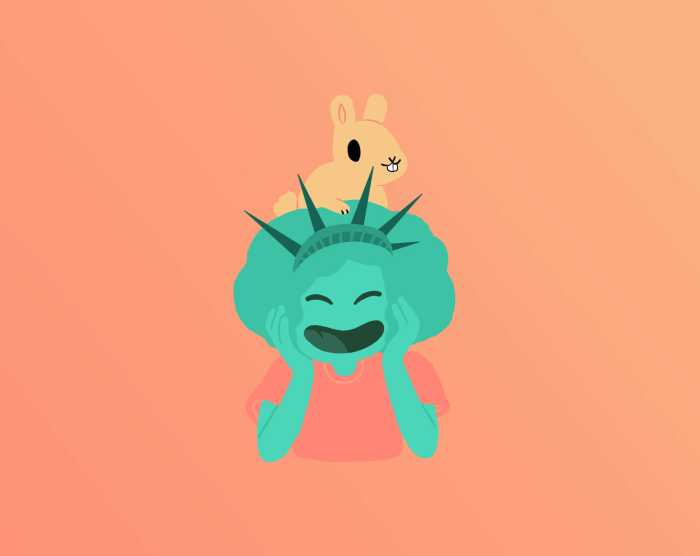
Here are mindfulness activities for kids of all ages to help them feel present, relax, and build resilience.
It’s been a year since the COVID-19 pandemic first entered our lives. Kids have experienced a lot of upheaval, including interruptions to school, among other serious challenges. Luckily, there is a powerful tool to help us navigate these difficult times—mindfulness activities for kids. Jon Kabat-Zinn, a renowned expert in the field of mindfulness, defines the practice as “the awareness that arises from paying attention, on purpose, in the present moment and non-judgmentally.”
Through mindfulness, we learn to slow down, be aware, and breathe. Using mindfulness activities, kids can learn to cope with stress, regulate emotions, and strengthen their focus. It’s beneficial to learn about mindfulness at any time, but it can truly provide a lifeline in managing the turbulence that has accompanied the pandemic. Below are some strategies to help your child quiet their mind and build resilience. Explore these activities as a family to see what is the best fit for you and your kids!
Mindfulness Activities for Kids of All Ages
Create a “calm corner” or “peace section” in your home.
Guide your child to decorate a poster with pictures of their favorite people, significant places, and meaningful objects. When your child feels sad or overwhelmed, they can sit in the calm corner with cozy blankets or on a bean bag to turn around their mood and have a “time in.”
Incorporate mindfulness into your everyday family life.
Whether it’s part of your child’s bedtime routine or something you do while sitting down to dinner together, have everyone identify one thing you are grateful for each day. A focus on gratitude enables us to appreciate our blessings. Use this time to put stressful moments from the day behind you.
Mindfulness Activities for Kids Ages 2-5
Introduce young kids to yoga.
Try a virtual yoga class tailored for toddlers and preschoolers with Karma Kids Yoga, a Manhattan-based yoga studio for children. Pre-recorded classes are available through its YouTube channel, and it also hosts live, interactive classes on Zoom and Instagram Live. Check out the Karma Kids Yoga schedule to discover engaging classes that encourage mindful movement for your little one and help them find their inner Zen.
Teach preschoolers how to identify their feelings.
Teaching our toddlers and preschoolers how to identify and name their feelings is an important part of growing up. Being aware of our emotions, and how they affect us, is also a key component of mindfulness. Read Todd Parr’s book The Feelings Book and discuss how it’s normal to experience different feelings every day. Learning how to name feelings is also a key cornerstone in helping preschoolers build emotional intelligence skills.
Meditate with Elmo, Cookie Monster, and other Sesame Street friends.
In an effort to help kids and parents combat the stress and anxiety brought on by the pandemic, Headspace and Sesame Street partnered to create “Monster Meditations,” six animated shorts to teach kids mindfulness, meditation, and social and emotional learning. The shorts are around 3 minutes long and feature animated versions of Sesame Street Muppets expressing feelings of frustration, impatience, being overwhelmed, nervousness, disappointment, and excitement, and learning breathing techniques, sensory activities, and mindfulness techniques to help manage everyday scenarios.
Mindfulness Activities for Kids Ages 6-8
Teach kids to focus on breathing.
Don’t be intimidated by meditation! Place a “breathing buddy,” such as a favorite stuffed animal, on your child’s stomach. Follow a guided meditation from Linda Lantieri’s book Building Emotional Intelligence: Practices to Cultivate Inner Resilience in Children as your child concentrates on their breathing. The stuffed animal provides a visual cue for kids to connect with the present moment and relax.
Meditate with Barbie.
Headspace for Kids partnered with Barbie to raise awareness surrounding emotional well-being and mindfulness exercises like meditation with the Barbie Wellness Collection. Exercises include meditations that will help kids get ready for their day in the morning, bounce back from scary and worrisome thoughts, appreciate the world around them, settle down for bed, and simply breathe.
Explore foods with your senses.
Even the simple act of eating a snack can teach us mindfulness—enter Raisin Meditation. Use your senses to evaluate how it looks, smells, feels, and tastes. Focus on chewing the raisin by counting how many bites you took before swallowing it. Showing this level of attentiveness helps our kids to cultivate mindfulness.
Make a mindfulness craft.
Read the book Peaceful Piggy Meditation by Kerry Lee Maclean and construct a “mind in a jar” as an extension activity. Fill a jar with water and glitter, similar to a homemade snow globe. Shake the jar and watch the glitter settle on the bottom. When the water is clear, it reminds us to nurture a sense of calm. Notice and discuss with your child how the story and mind in a jar activity go together.
Mindfulness Activities for Kids Ages 9-12
Spend time coloring in a mindfulness coloring book.
Coloring isn’t just for young kids anymore. Older kids, tweens, teens, and even adults are finding their way back to the childhood favorite—and it’s a great way to practice mindfulness. Consider purchasing a mandala coloring book. Mandalas are important in the Buddhist and Hindu faith traditions and include a series of geometric shapes. Coloring mandalas is a gentle way to still the mind and express one’s creativity.
Go for a walk outside.
Step into the outdoors for a nature walk. While focusing on your senses, point out what you and your child observe as you walk and take deep breaths. This exercise helps both the mind and body through the restorative power of nature.
Mindfulness Activities for Kids Ages 13 and Older
Listen to soothing music and journal.
Teenagers may experience anxiety as part of their development. Encourage your teenager to listen to soothing instrumental music while expressing their thoughts in a journal. To help with brainstorming, have your teenager check out some mindfulness writing prompts, like what are you grateful for, what is something you feel nervous about, brainstorm a list of everything you’d like to do, and make a list of 25 things that make you smile.
Utilize aromatherapy to create a calm, mindful environment.
Purchase some lavender body cream or an essential oil for your teen. Aromatherapy can assist in setting a contemplative mood.
Create a mantra or statement of affirmation.
Teenagers can benefit from learning how to use affirmations and mantras. Affirmations are positive statements meant to uplift our spirits and shape our state of mind. Show your teen how to use the power of words to stay grounded and reject negative self-talk.
Above all, an important key to mindfulness is modeling it for our kids. When we are mindful together, we can establish meaningful routines that promote self-care and help us to stay connected as a family, even in the toughest of situations.
Vera Sirota is a third wave feminist, writer, teacher, and proud mama of two beautiful girls. She graduated from the University of Michigan and CUNY Brooklyn College.
Wanna read more stuff like this? Get our newsletters packed with ideas, events, and information for parents in Staten Island.




